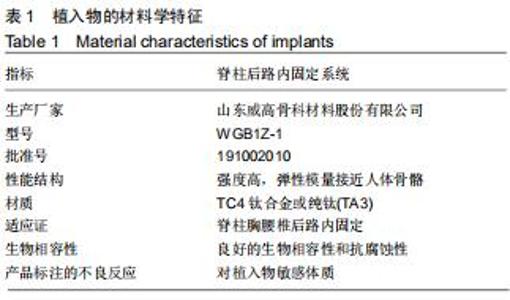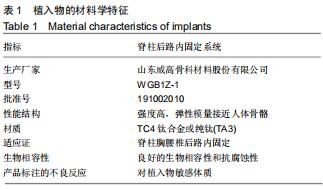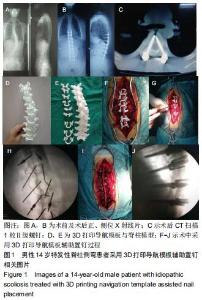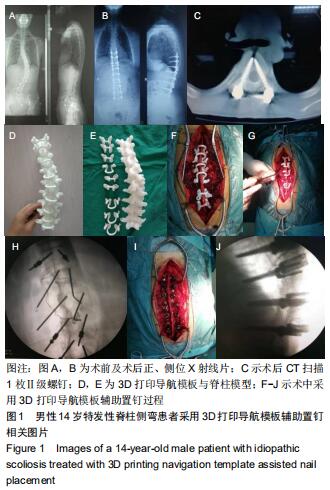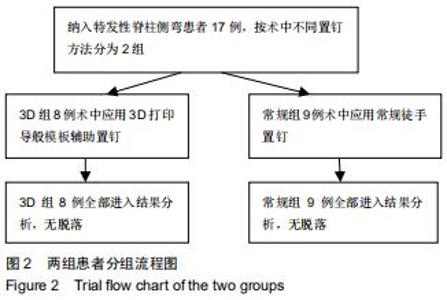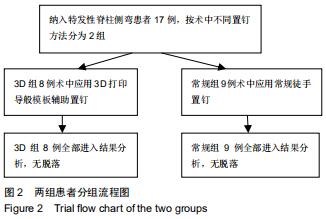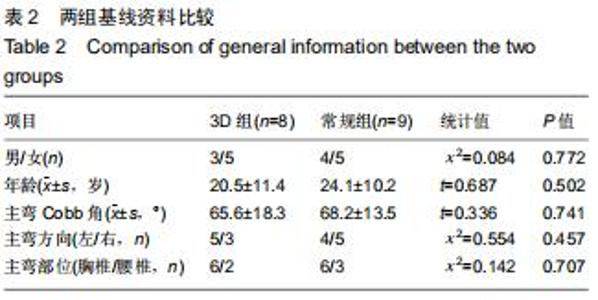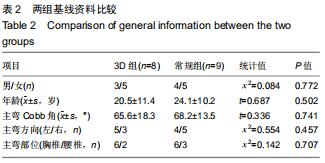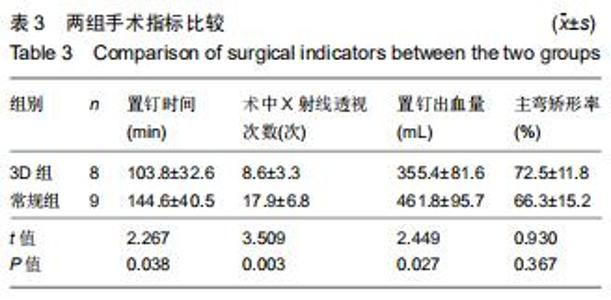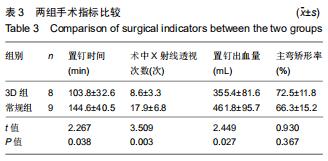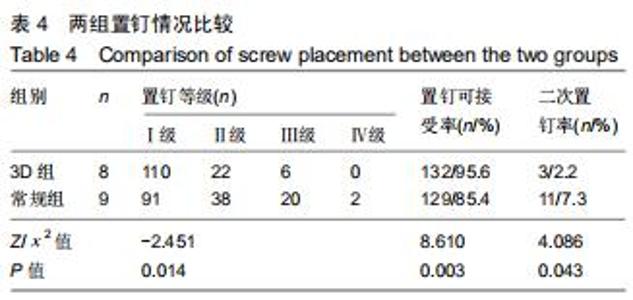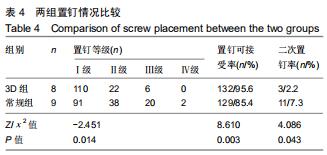|
[1] LIU T, HAI Y. Sagittal plane analysis of selective posterior thoracic spinal fusion in adolescent idiopathic scoliosis: a comparison study of all pedicle screw and hybrid instrumentation.J Spinal Disord Tech. 2014;27(5): 277-282.
[2] 盛飞,夏超,薛冰川,等.凸侧共平面矫形技术与凹侧平移技术对特发性胸椎侧凸的矫形效果比较[J].中国脊柱脊髓杂志,2019, 29(1):9-15.
[3] UPENDRA BN, MEENA D, CHOWDHURY B, et al. Outcome- based classification for assessment of thoracic pedicular screw placement. Spine(Phila Pa 1976).2008;33(4):384-390.
[4] HWANG TJ, KIANG C, PAUL M. Surgical applications of 3-dimensional printing and precision medicine. JAMA Otolaryngol Head Neck Surg. 2015;141(4):305-306.
[5] 郝申申,刘志斌,王飞,等. 3D打印导航模板在脊柱侧凸矫形术中的初步应用[J].临床误诊误治,2018,31(6):56-59.
[6] WU AM, SHAO ZX, WANG JS, et al. The accuracy of a method for printing three-dimensional spinal models. PLoS One. 2015;10(4):e0124291.
[7] CHEN H, WU D, YANG H, et al. Clinical use of 3D printing guide plate in posterior lumbar pedicle screw fixation. Med Sci Monit. 2015;21:3948-3954.
[8] 麦合木提江·穆海麦提,唐军伟,张玉新. 应用3D打印精准手术治疗脊柱侧弯一例报告[J].临床外科杂志,2019,27(1):90.
[9] LU S, ZHANG YZ, WANG Z, et al. Accuracy and efficacy of thoracic pedicle screws in scoliosis with patient-specific drill template. Med Biol Eng Comput. 2012;50(7):751-758.
[10] 朱欢叶,李波,简月奎,等.选择性置钉固定在青少年特发性脊柱侧弯矫形中的研究进展[J].安徽医药, 2019, 23(7): 1277-1280.
[11] 刘晓敏,陈银河,申才良.Matrilin-1基因rs1149048单核苷酸多态性与青少年特发性脊柱侧凸易感性的Meta分析[J].安徽医药, 2015,19(10):1933-1936.
[12] 赵菁,虞锡丹,徐纯鑫,等.青少年特发性脊柱侧凸的国内外治疗现状[J]. 南通大学学报(医学版),2018,38(3):203-205.
[13] 李劼,刘臻,朱泽章,等.Lenke 5型青少年特发性脊柱侧凸选择性胸腰椎融合手术入路对矢状面重建的影响[J].中华骨科杂志, 2018,38(11):666-674.
[14] 白博,白雪岭,赵小文,等.3D打印在脊柱外科的应用现状与未来[J].中国骨与关节杂志,2017,6(5):321-325.
[15] DUART CLEMENTE J, LLOMBART BLANCO R, BEGUIRISTAIN GURPIDE JL. Morphological changes in scoliosis during growth. Study in the human spine . Rev Esp Cir Ortop Traumatol. 2012 56(6):432-438.
[16] 周松,朱泽章,邱勇,等.青少年特发性胸椎侧凸顶椎区椎弓根及椎管的形态学特征[J].中国脊柱脊髓杂志,2013,23(2):113-118.
[17] RODRIGUES LM, NICOLAU RJ, MILANI C. Computed tomographic evaluation of thoracic pedicle screw placement in idiopathic scoliosis. J Pediatr Orthop. 2011; 20(4): 195-198.
[18] 施新革,张永刚,张雪松,等.术中CT在后路全椎弓根螺钉治疗重度脊柱侧凸中的初步应用[J].中国骨伤,2013,26(4):309-313.
[19] MODI HN, SUH SW, HONG JY, et al. Accuracy of thoracic pedicle screw using ideal pedicle entry point in severe scoliosis. Clin Orthop Relat Res. 2010; 468(7): 1830-1837.
[20] KOTANI T, AKAZAWA T, SAKUMA T, et al. Accuracy of pedicle screw placement in scoliosis surgery: a comparison between conventional computed tomography-based and o-arm-based navigation techniques. Asian Spine J. 2014; 8(3): 331-338.
[21] WATANABE K, MATSUMOTO M, TSUJI T, et al. Ball tip technique for thoracic pedicle screw placement in patients with adolescent idiopathic scoliosis. J Neurosurg Spine. 2010; 13(2):246-252.
[22] 李彦明,李明,张国友,等.3D打印在脊柱侧凸矫形中的应用初探[J]. 第二军医大学学报,2016,37(2):231-235.
[23] 王虹,丁焕文,刘宝,等.计算机辅助技术联合3D打印模板在脊柱畸形矫正手术中的应用研究[J].中国临床解剖学杂志,2016, 34(4):392-396.
[24] 李浩,张学军,祁新禹,等.3D打印技术辅助手术治疗儿童重度脊柱侧凸的应用研究[J].临床小儿外科杂志,2018,17(9):654-658.
[25] 左威,朱睿,程黎明.3D打印技术在脊柱外科的应用进展[J].中华实验外科杂志,2016,33(7):1873-1876.
[26] 赵晖,邹明,胡伟,等. 3D打印技术在老年退变性腰椎侧弯手术中的应用[J]. 郑州大学学报(医学版),2019,54(4):623-626.
[27] 张宇鹏,史亚民,王华东,等.个体化数字导航模板在脊柱侧凸手术中的应用研究[J].中国骨与关节杂志,2015,4(3):219-223.
[28] 李鑫,张强,赵昌松,等.椎弓根置钉导板导航治疗严重脊柱侧凸手术八例临床观察[J].中华医学杂志, 2014, 94(11): 840-843.
[29] 王飞,刘志斌,张建华,等.3D打印导航模板在辅助寰枢椎椎弓根螺钉置入中的应用价值[J].中国脊柱脊髓杂志,2017,27(1):61-68.
[30] 张宇鹏,史亚民,王华东,等.脊柱侧凸数字导航模板的准确性与安全性的病例对照研究[J].中国骨伤,2015,28(10):945-950.
|
